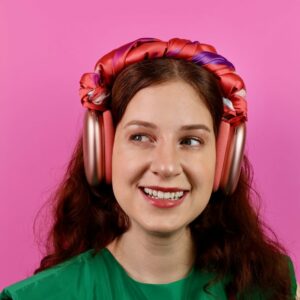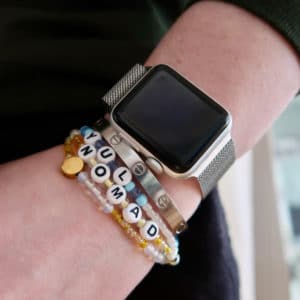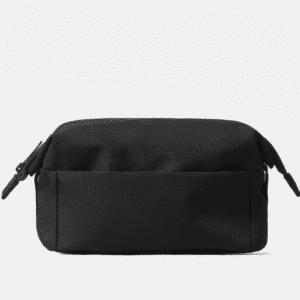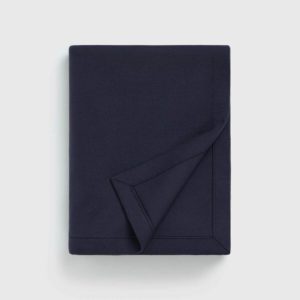In today’s post, I’m sharing a fascinating experience I had recently – undergoing a colour season analysis! You might have heard of it as “finding your colour season,” but if you’re not familiar, let me fill you in. Colour analysis is a method to determine the most flattering colours for an individual based on their natural skin tone, eye colour, and hair colour. The idea is that certain colours can either harmonize or clash with your complexion. By identifying your colour season, you can make more informed choices about clothing, makeup, and even hair colour.
I first encountered the concept of colour seasons as a teenager, but I dismissed it as outdated 80s fashion advice. However, as the idea gained popularity again over the past few years, my curiosity was piqued. I wanted to find out my colour season and see if it aligned with my natural tastes. To get my results, I tried various methods: self-assessment, virtual analyses, and a professional in-person session.

My Color Analysis Journey
To kick off my colour analysis journey, I did a self-assessment using online descriptions and celebrity lookalikes. I guessed I might be a Cool Summer based on my medium brown hair and skin tone. Next, I hired two different people on Fiverr for virtual analyses. The results were surprising: one said I was a Soft Autumn, and the other claimed I was a Bright Winter. With such varying results, I knew I needed a more reliable method.
I decided to turn to a professional: Ana Luz, a consultant in Montreal who conducts in-person colour analysis using the draping technique. The session was comprehensive and detailed, and here’s how it unfolded.
The Process of Color Analysis
Colour analysis involves analyzing three main factors: undertone, contrast, and chroma.
- Undertone: The subtle hue beneath your skin’s surface that affects how colours interact with your complexion. Undertones can be warm, cool, or neutral.
- Warm Undertones: Yellow, peach, or golden hues. Complementary colours include earthy tones like terracotta, warm browns, and rich oranges.
- Cool Undertones: Pink, blue, or purple hues. Flattering colours include jewel tones like sapphire blue, emerald green, and cool purples.
- Neutral Undertones: A balanced mix of warm and cool hues, allowing a wide range of colours.
- Contrast: The difference in brightness and colour between your hair, skin, and eyes.
- High Contrast: Notable differences, suitable for bold colour combinations.
- Low Contrast: Subtle differences, best with softer, tonal colour combinations.
- Medium Contrast: Something in the middle.
- Chroma: The intensity or purity of a colour.
- High Chroma: Vivid and bold colours, like bright red and electric blue.
- Low Chroma: Subdued and muted colours, like dusty rose and soft mauve.
Professional Analysis with Ana Luz
The first step in my in-person session with Ana was to determine my contrast level. We took a grayscale photo to see how my natural features interacted with different contrasts. I was identified as medium to low contrast, which explains why I often feel overwhelmed by loud prints.
Next, we examined my value, which means whether light or dark colours suited me best. It turns out, light colours are more flattering for my complexion. Dark colours felt heavy and harsh, making my skin appear tired.

Then, we assessed chroma to determine if bright or muted colours were best for me. Unsurprisingly, I suited soft, muted colours in the medium-light range. This was consistent with my preference for understated, soft hues.
Finally, we analyzed my undertone. I had always believed I had a cool undertone, and Ana confirmed this through the draping process. However, the true test was whether I had true cool skin or a neutral cool undertone. The answer? Neutral cool. This means I can wear both silver and gold jewelry and borrow colours from the Soft Autumn palette due to my dominant soft characteristic.


The 12 Color Seasons
Colour analysis categorizes individuals into 12 colour seasons, each representing a unique combination of undertones, contrast levels, and chroma. Here’s a quick rundown:
- Light Spring: Soft and warm, low to medium contrast.
- Clear Spring: Bright and warm, high contrast.
- Warm Spring: Rich and warm, medium to high contrast.
- Light Summer: Soft and cool, low to medium contrast.
- Soft Summer: Subdued and cool, medium contrast.
- Cool Summer: Cool and muted, medium to high contrast.
- Soft Autumn: Warm and muted, low to medium contrast.
- Deep Autumn: Rich and warm, medium to high contrast.
- Warm Autumn: Warm and muted, medium to high contrast.
- Light Winter: Cool and clear, low to medium contrast.
- Clear Winter: Bright and cool, high contrast.
- Deep Winter: Rich and cool, medium to high contrast.
My Final Results
After a thorough analysis with Ana Luz, I discovered my true colour season: Soft Summer. This means I look best in soft, muted colours with a touch of gray. Black and white aren’t in my colour palette, but I have a lot of blues, greens, and purples to work with. My skin tone is neutral, allowing me to wear both gold and silver jewelry.
One of the most significant revelations was about my hair colour. While I’ve been dyeing my hair auburn for years, the analysis recommended a colour closer to my natural medium brown. I’ve since made the change and love the result.
How I Use This Information
I don’t see my colour season as prescriptive, but it helps me make more mindful choices. I plan to declutter my wardrobe, shop more intentionally, and build a cohesive collection that aligns with my Soft Summer palette. Interestingly, much of my wardrobe already fits my season, suggesting I’ve naturally gravitated toward cool tones and soft colours.
Colour analysis has been an enlightening journey, and I encourage anyone curious about their most flattering colours to give it a try. Whether you go the DIY route, try virtual analyses, or opt for a professional session, discovering your colour season can be a fun and insightful experience.







































